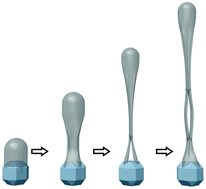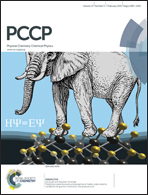Splitting and joining in carbon nanotube/nanoribbon/nanotetrahedron growth
Abstract
We report a novel phenomenon for carbon nanotube growth that results in a new carbon nanotube morphology. A carbon nanotube grown via metal nanoparticle-catalyzed chemical vapor deposition splits into two flattened nanotubes during growth and the two flattened nanotubes merge to form a ring of carbon nanotube/nanoribbon. This novel process is revealed by transmission electron microscopy observations of the carbon nanostructures. We propose that the splitting-and-joining process involves only one metal catalyst nanoparticle and a self-folding mechanism that we have named the origami mechanism to explain the process and the formation of nanoribbons and nanotetrahedra.


 Please wait while we load your content...
Please wait while we load your content...